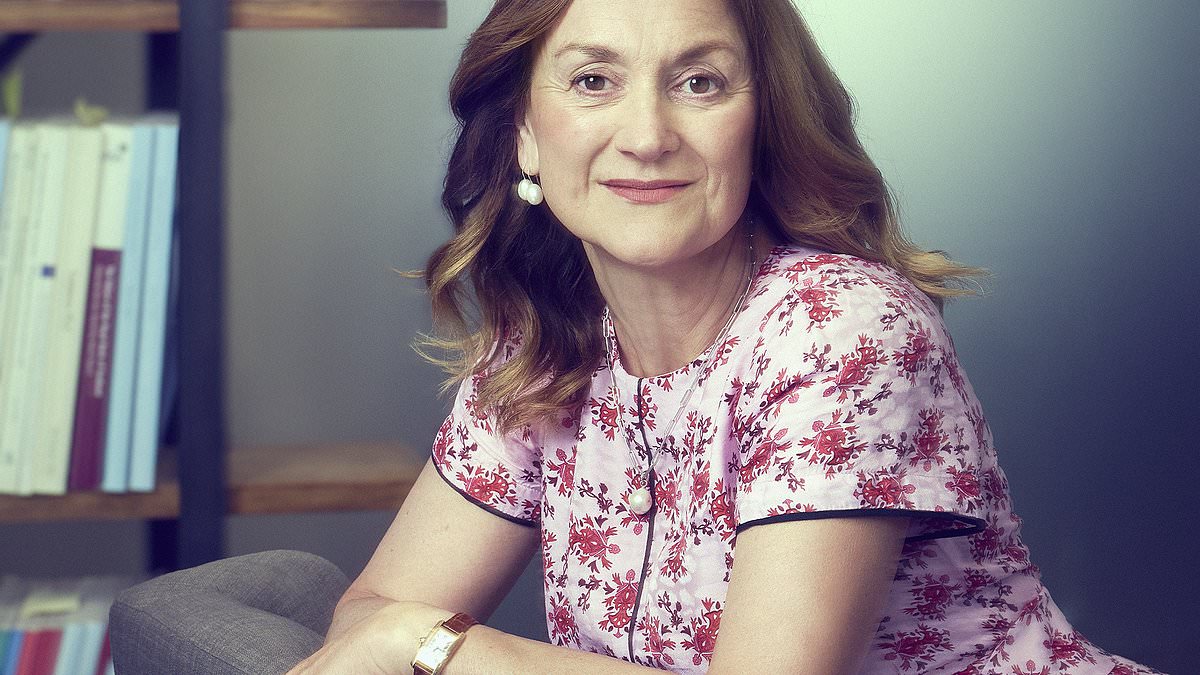One grey morning in April, I found myself alighting from a train at a deserted station. A friendly taxi driver took me through a flat landscape deep in the heart of rural England to a business centre on a country estate.
This unlikely venue, if you believe the hype, is the nerve centre of cutting-edge bone scans in the UK, that could herald a revolution in osteoporosis care for millions of women.
Advocates insist the £230-a-time scans, known as REMS, are superior to those offered by the NHS which, they claim, are so inaccurate that they lead to patients being wrongly told they have osteoporosis. REMS scans, they argue, could spare women being falsely diagnosed and needlessly prescribed medication that can – albeit in rare cases – have serious side effects.
Considering that the bone-thinning disease affects some three million Britons – the majority being women – these are bold statements. But it’s a subject close to my heart. After fracturing my shoulder last August – I fell while jogging – I was found to have osteoporosis during an NHS scan, known as a DEXA, and prescribed a drug treatment.
So how did I find myself at this private clinic? In January, I wrote an article about my diagnosis in order to raise awareness of the disease.

Ruth Sunderland suffers from the bone-thinning disease which affects some three million Britons – the majority being women
Shortly after, a message popped into my inbox from the marketing director of the private REMS clinic. (We have chosen not to name the clinic.) Referring to the mention in my piece that I’d had a DEXA scan, she wrote: ‘We offer a far more accurate bone scan service.’
DEXA scans, she claimed, are ‘out of date’ and ‘suffer from operator error.’ She continued: ‘That is why we have brought a system from Italy that is consistently more accurate and reliable. . . We don’t advocate the use of harsh drugs – we can prove that changes in diet, lifestyle, exercise and supplements can turn people’s bone health issues around. We are very passionate about bringing accurate scans to people like you who’ve been scared by their GPs and specialists.’
As a journalist, I was sceptical. It felt very jarring that any professional marketing director would write in those terms. And as a patient, still coming to terms with a frightening diagnosis, I was upset and unsettled.
I could see how vulnerable women would very much like to believe their NHS scan was wrong and that they had been ‘scared’ by their doctors. For instance, on the clinic’s website, a patient reveals how, having originally been diagnosed with ‘moderately severe osteoporosis’ in their spine, that their spine ‘appears completely normal’. The patient adds that they were concerned the ‘dodgy DEXA’ was so inaccurate.
And I have to admit a small part of me was seduced. How wonderful it would be, I thought, if this doctor found I didn’t have this disease after all.
In any case, I wanted to see for myself, so I paid the £230 fee out of my own pocket. (REMS scans, which use ultrasound to measure bone, are not licensed in the UK.)
Professor David Reid, one of the UK’s leading experts in osteoporosis, told me: ‘REMS is an interesting technology. It’s probably quite a useful measure of bone mass but has yet to be fully proven as a replacement for DEXA scanning.’
Royal Osteoporosis Society experts judge REMS scans to ‘hold promise in the evaluation of people at risk of osteoporosis.’
In my session with him, the private doctor, who lists a string of impressive qualifications, came across as highly professional and empathetic.
The REMS scan, which he carried out himself, involved a hand-held probe being passed over my hip and abdomen, to examine my lower spine. It was quick and painless, and I received the results straight away. According to the scan, I did not have osteoporosis, the doctor told me. My fracture risk was low, he added.
He recommended I continue my drug treatment – a one-year course of injections my NHS doctors prescribed, proven to rebuild the bones and prevent fractures. At that point, despite my misgivings, I felt the consultation had been interesting and useful to build a broader picture about my bones.
Prior to the appointment, the clinic’s marketing manager encouraged me to join a Facebook osteoporosis support group. There, I discovered, the private doctor has a vocal fan base among thousands of members.
However, the tone of some in the posts concerned me. In one, a member advises another: ‘Don’t even consider having a DEXA. They are notoriously inaccurate and leave many women with an erroneous diagnosis of osteoporosis which then leads to doctors pushing drugs.’
A number of members had experiences similar to mine: they’d visited the same private doctor for a REMS scan which ‘proved’ their DEXA scan was ‘wrong’. The idea that it may be the private REMS scan that was incorrect, rather than the DEXA, was not entertained. I was worried that these women were ‘diagnosis shopping’: choosing to believe the REMS scan because it was what they wanted to hear.
What I didn’t realise, until another member sent me screenshots last month, was that I was unwittingly the subject of some postings. I discovered that, back in January, the marketing director of the private clinic had posted an email exchange between me and the doctor on the site. It included some of my private medical information.
The context was a discussion about the article in which I had revealed my diagnosis. The marketing director wrote about approaching me to attend the clinic, adding: ‘She [me] came back with lots of questions wanting evidence and research.
‘Fair enough, but she appears to be wedded to the medical model and . . . seems to think that drugs are the obvious cure for everything.’
The gist of the comments that followed seemed to be about trying to help me ‘see the light’ about ‘incorrect DEXA scans’. Others were less kind: ‘I can’t read any more of this stupid opinionated woman,’ exclaimed one poster. ‘It reads like she’s utterly privileged in being offered a nasty toxic drug. Lucky her, not. I’m sure she’s in the brigade of Dr Knows Best.’
Another seemed to suggest I deserved to suffer bad side effects for writing about the mainstream medical views on osteoporosis: ‘Karma’s a bitch,’ she wrote, venomously.
Leaving aside that unpleasantness – and how downright weird it was to discover these conversations had gone on essentially in public as the marketing director was making her approach to me – I was left with a conundrum of which scan to believe. So I decided to take a second DEXA scan, which I had in a private London clinic. The result was similar to the initial one I had at St Thomas’ Hospital.
I do have osteoporosis. And the second DEXA revealed alarming new information: I had two fractures in my spine, a fact which I was unaware of and that left me at very high risk of further spinal fractures.
Neither the first NHS scan, nor the private REMS scan, spotted this because they didn’t look at that part of my back. If I had made any treatment decisions based on my REMS scan alone, which showed I did not have osteoporosis, I might have opted not to take medication.
That would, according to mainstream medical opinion, have left me at risk of disabling, painful fractures. Based on the earlier NHS scan, I was already on a treatment to reduce the risk.
Of course, this is just my individual experience. It is not possible to generalise from that to the overall reliability of REMS or DEXA. And experts do say that the REMS technology is exciting and may have great potential. But some of the claims made for it seem to go too far.

Ruth fractured her shoulder last year when she fell while out jogging
By the same token, I’m certainly not arguing that DEXAs are perfect. DEXA scans give ‘scores’ which do seem slightly arbitrary: a fraction of a percentage either side of the line and you are deemed either to have osteoporosis or not.
But by far the biggest problem in my mind is that too many people at risk do not have access to any scans at all.
In one heartbreaking case, I wrote about a man who suffered ten spinal fractures before being diagnosed with osteoporosis and offered treatment. That is why I launched this newspaper’s successful campaign to have Fracture Liaison Services installed in every NHS Trust in the UK so that anyone over 50 who turns up at A&E with a broken bone can be scanned.
When approached by The MoS, the marketing director of the private clinic denied she had encouraged me to join the Facebook group, arguing that she had simply made me aware of its existence. She also denied sharing my private medical information.
The marketing director added: ‘We do not advocate that people should have a REMS scans as an alternative to a DEXA scan. REMS scans are a form of ultrasound that measures bone density and quality – they do not detect fractures or breaks. We have never suggested otherwise.’











